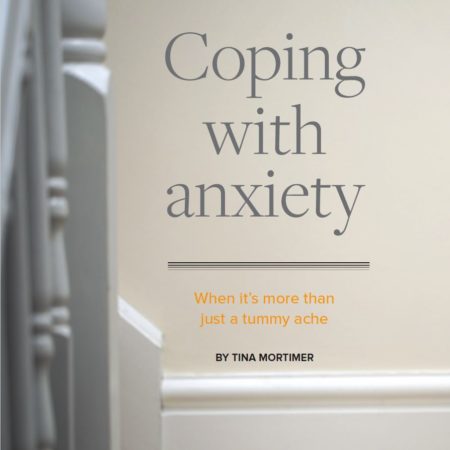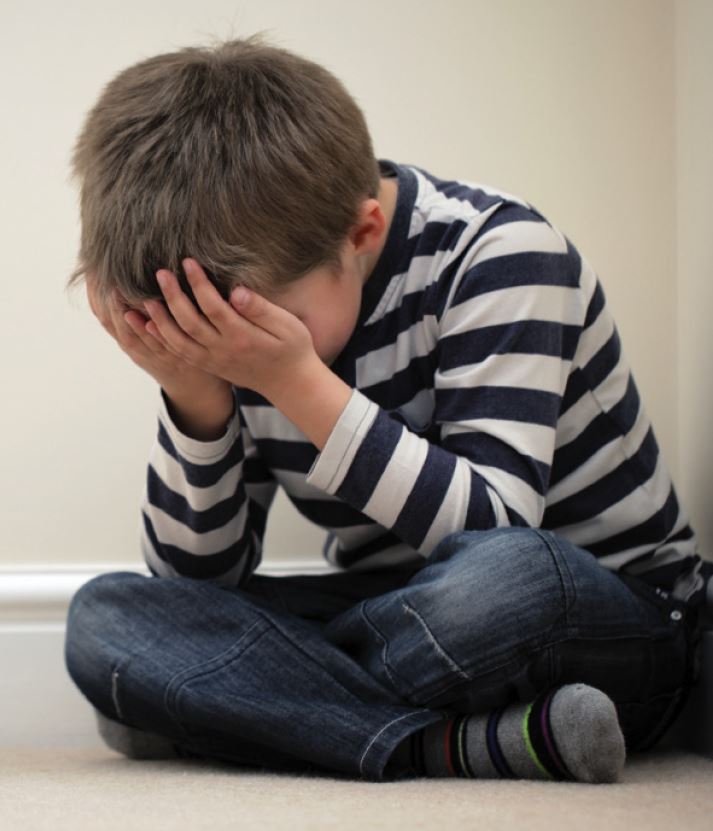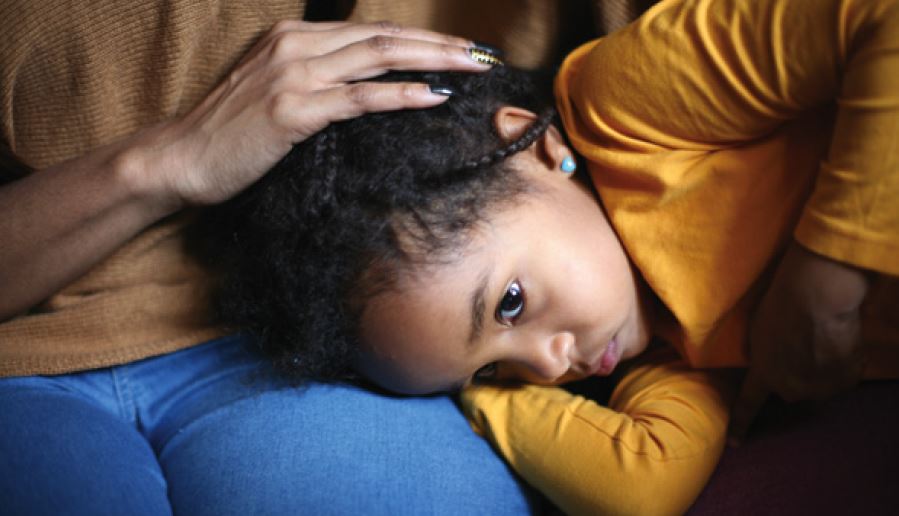Last spring, just a few months shy of his 9th birthday, my otherwise healthy, active child began complaining of stomachaches.
The first time he complained, I kept him home from school and fed him popsicles and crackers until lunchtime, by which point he had made a miraculous recovery. The week progressed as usual until Friday when he once again complained of an upset tummy, but this time there was an additional symptom — dizziness.
I took his temperature. He didn’t have a fever. Had there not been a track-and-field event planned for that afternoon, which I knew he was looking forward to, I might have thought he was faking illness for another leisurely day of popsicles and TV.
His tears persuaded me to, once again, let him stay home; and once again, he was his normal self by mid-morning.
In the weeks that followed, he complained on and off about dizziness, numbness in his extremities, headaches and sweaty palms.
But the symptoms were so haphazard and fleeting — he’d complain of feeling dizzy during a car ride home from the grocery store, but he’d feel fine by the time we pulled into the driveway — they were easy to dismiss.
His irrational fears were another story.
If it was too windy or cloudy, he wouldn’t want to play outside. If he had the slightest stomachache the day before, he wouldn’t want to go to school the next day for fear it would happen again.
If we were a couple of minutes late for baseball practice, he’d be so worried everyone would be looking at him that he wouldn’t want to get out of the car. A new mole, a sore shoulder, an itchy throat — these were all causes for alarm.
He’s the only kid I’ve ever known who actually wanted to go to the doctor’s office. He needed constant reassurance that he was OK.
“Don’t worry; you’re fine,” I’d tell him. It turns out, telling him he was “fine” was the exact opposite of the right thing to say (but more about that later).
It wasn’t until the complaints became even more frequent that we visited the pediatrician. By then it had become painfully clear that something was wrong.
A difficult diagnosis
Even though I’ve suffered from anxiety almost my entire adult life, I was pretty blind to the warning signs that my own son was in distress.
At his doctor’s appointment, he weighed 80 pounds, which is within the normal range for a boy of his height.
The only problem was, just a few weeks earlier — when we were there to treat his strep throat — he weighed 90 pounds. His pediatrician examined him and ordered tests, including blood work to rule out any medical issues.
When all the results came back normal, we sat down to talk about anxiety.
Here’s what I learned
- Anxiety is one of the most common mental health problems facing children today.
- Anxiety can produce a variety of physical symptoms.
- Anxiety can strike suddenly or build gradually and linger.
- Anxiety is one of the top reasons for chronic school absenteeism.
- Anxiety is highly treatable.
- Anxiety often has no discernable cause.
That last fact is one I found particularly frustrating. As parents, we want to be able to trace what ails our child to a tangible cause, something we have some level of control over, something we can make better.
But with anxiety, symptoms can be fuzzy, and there’s often no cause. Having a family history might make a child more susceptible, but any child can suffer.
Danielle Carlson, a licensed marriage and family therapist at Clearwater Counseling in Woodbury, wants to end the stigma attached to mental illness. More than half the patients she sees — who are ages 5 to 16 — need help with anxiety-related problems.
“In our society, mental health is not given the same attention as physical health,” she said. “With physical illness it’s understood that we go to the doctor, get medication and take all the time we need to get better. But when it comes to mental illness, most people will go long periods of time before they receive treatment.”
Common and complex
Anxiety disorders affect one in eight children (and an estimated 40 million adults), according to the nonprofit Anxiety and Depression Association of America. Such disorders often co-occur with other disorders such as depression, eating disorders, and attention-deficit/hyperactivity disorder (ADHD).
Anxiety disorders are characterized as extreme feelings of panic, fear, worry or irrational discomfort in everyday situations.
It’s important to recognize what’s normal and what’s a cause for concern.
Lauren Robbins, a licensed professional clinical counselor and licensed alcohol and drug counselor, is owner of Wild Tree Psychotherapy in St. Paul and White Bear Lake. The majority of children she sees suffer from some form of anxiety. However, she’s quick to point out that anxiety isn’t always a bad thing.
“We all experience anxiety from time to time; it’s a healthy emotional response when it’s functioning appropriately,” she said. “Anxiety tells us when we need to pay attention when we need to act, when something is important or when we’re unsure of something.”
Kids can experience anxiety leading up to the first day of school or before a big test. They can worry about not being included in sports or invited to a friend’s party.
In most of these situations, a child may worry or complain, but will move on quickly once the anxiety-provoking event has passed.
It’s when the worrying fails to decrease in response to the stressor being removed, Robbins said, that it’s considered a problem.
“When symptoms are ongoing and seem to extend into multiple areas of life — preventing a child from enjoying normal activities or causing pervasive self-doubt or excessive worry — it’s time to get a mental health professional involved,” she said.
Not all anxiety manifests itself in the form of clingy behaviors, according to psychologists with the New York-based nonprofit Child Mind Institute, which helps families struggling with mental health and learning disorders.
Some children react to anxiety with temper tantrums, disruptions in school or even dramatic meltdowns in public places such as shopping malls. They experience an overwhelming need to break out of the uncomfortable situation of anxiety, but don’t have the skills or words to make it happen.
Often such symptoms are misread as anger, aggression or opposition.
Children who seem angry and defiant often have severe unrecognized anxiety.
Even though I’ve suffered from anxiety almost my entire adult life, I was pretty blind to the warning signs that my own son was in distress.
Treatment options
The good news is, with treatment and support, a child can learn how to manage symptoms of anxiety.
According to Robbins, children are highly responsive to treatment.
“Children are naturally resilient,” she said. “And, in my experience, kids report speedier improvement in therapy because of their propensity towards resiliency.”
A therapist or psychiatrist can diagnose an anxiety disorder and develop a treatment plan to help get your child on the road to recovery. Cognitive-behavior therapy (CBT) is often successful in treating anxiety.
CBT teaches children new ways of thinking and dealing with anxiety-provoking situations. Carlson said children often benefit from other developmentally appropriate therapies, such as play therapy, art therapy, and role-playing.
What matters most, Carlson and Robbins agreed, is that families get help as soon as they recognize a problem.
“We know that early intervention is a significant predictor for positive outcomes,” Carlson said. “Like a physical illness or injury, failure to address it early on can create serious complications for a child later in life.”
Types of anxiety problems among children can include generalized anxiety disorder, panic disorder, separation anxiety disorder, social anxiety disorder, selective mutism, specific phobias, obsessive-compulsive disorder and post-traumatic stress disorder.
Your child’s pediatrician can help you decide on the best course of treatment and/or refer you to a mental health professional.
How can you tell if your child is suffering from anxiety?
- Does your child spend a lot of time in the nurse’s office at school or try to avoid going to school altogether?
- Does your child express extreme concern over remote events such as natural disasters, storms or serious illness?
- Does your child act irritable, worried, sad or afraid to do simple things alone?
- Does your child have unexplained trouble with tantrums at home (especially after age 7 or 8) or does she appear to be oppositional or aggressive in social situations?
- Does your child experience physical symptoms such as headaches, dizziness, dry mouth, excessive sweating or insomnia that can’t be explained by a medical condition?
- Has your child disengaged in activities he or she once enjoyed, preferring instead to stay inside and watch TV or play video games?
If you answered yes to one or more of these questions, your child may have an anxiety disorder.
Coping with Anxiety Do’s and Don’ts
Though finding treatment for your child (by a mental health professional) is the most effective way of dealing with any anxiety disorder, there are things parents can do at home to help a child cope with emotions:
DO validate your child’s emotions. You may be tempted to tell your child, “Don’t worry, nothing’s wrong,” but that can send the wrong message. A child in the grips of a panic attack can no sooner stop worrying than turn into Superman and fly away. Children need to understand that it’s OK for them to experience anxiety or any other emotion. Instead, tell them you understand. Knowing that someone “gets it” can be a big relief to a child with anxiety.
DO help your child name what he or she is experiencing in the moment. Ask your child to describe the sensations he or she is feeling in their body. Encourage slow and deep breaths. This can help a child feel more grounded and in control.
DO create a safe, structured environment with boundaries and limits, in which parents are perceived as the leader of the family, while at the same time allowing children to have input and collaborate. This type of environment teaches children how to control and manage their emotions.
DON’T tease, ridicule or minimize a child’s emotional experience by telling her she’s making a big deal out of nothing. Remember: Perception can feel like reality
for a child.
DON’T compare your child to other children. DON’T allow your child to engage only in coping skills that help him avoid emotional discomfort, such as video games or TV watching. Practice positive coping skills with your child, such as mindful breathing, journaling or yoga.
Resources
Where can you turn if your child is facing a mental-health problem?
Minnesota is home to many uniquely skilled private practices, early intervention programs, family wellness centers, and top-notch treatment facilities, including many that specialize in play therapy for kids.
Beyond exploration of the larger organizations mentioned here, ask around. Seek recommendations from teachers, neighbors, friends, and family members. You might be surprised how not alone you are in facing challenges with your child.
You can also search for therapists, psychologists, psychiatrists, and support groups by ZIP code at therapists.psychologytoday.com, which allows you to select therapists by their specialties, insurance plans, and therapy styles. Search for local play-therapy specialists at a4pt.org.
Washburn Center for Children, Minneapolis, Minnetonka, and Brooklyn Park
washburn.org / 612-871-1454
PACER Center Bloomington
pacer.org / 952-838-9000
St. David’s Center for Child & Family Development, Minnetonka
stdavidscenter.org / 952-548-8700
PrairieCare, Brooklyn Park, Chaska, Edina, Maple Grove, Maplewood, Minneapolis, Rochester, and Woodbury
prairie-care.com / 763-762-8800
Tina Mortimer is a contributing writer for many local publications. She lives in White Bear Lake with her husband and two children. Follow her work at tinamortimer.contently.com.




















